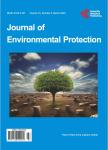Comparative Study of Lead Removal by Extracts of Spinach, Coffee, and Tea
Comparative Study of Lead Removal by Extracts of Spinach, Coffee, and Tea作者机构:Chemistry Department Dillard University New Orleans USA.
出 版 物:《Journal of Environmental Protection》 (环境保护(英文))
年 卷 期:2013年第4卷第3期
页 面:250-257页
学科分类:1002[医学-临床医学] 100214[医学-肿瘤学] 10[医学]
主 题:Heavy Metals Tea Coffee Lead Remediation Water Contamination Phytoremediation
摘 要:The use of tea and coffee for the removal of heavy metal from aqueous lead solutions has been reported. However, those studies were limited to expended dry biomass of coffee and tea and the lead concentration in those studies range from 10 - 100 ppm of aqueous lead solution. This study compared the effectiveness of aqueous extracts of instant coffee (IC), coffee ground (CG), coffee bean (CB), Lipton tea (Tea), and spinach puree (SP) in removing lead from 1300 PPM of aqueous lead solution. After 24 hr of agitation at room temperature followed by centrifugation, the lead concentration (in ppm) in the liquid from each reaction tube was analyzed using EPA Method 6010 (Inductively Coupled Plasma-Atomic Emission Spectrometry (ICP-AES)). The results suggest that the order of lead removal was Spinach (99%) Instant coffee (95%) Tea (91%), CG (62%) CB (59%). In comparing the brewed versus the boiled extracts, the results demonstrated that temperature of the aqueous extract affected the lead removal potential of coffee and tea in decreasing order: IC (95%:79%), Tea (91%:88%) CG (62%:53%) CB (59%:53%).



